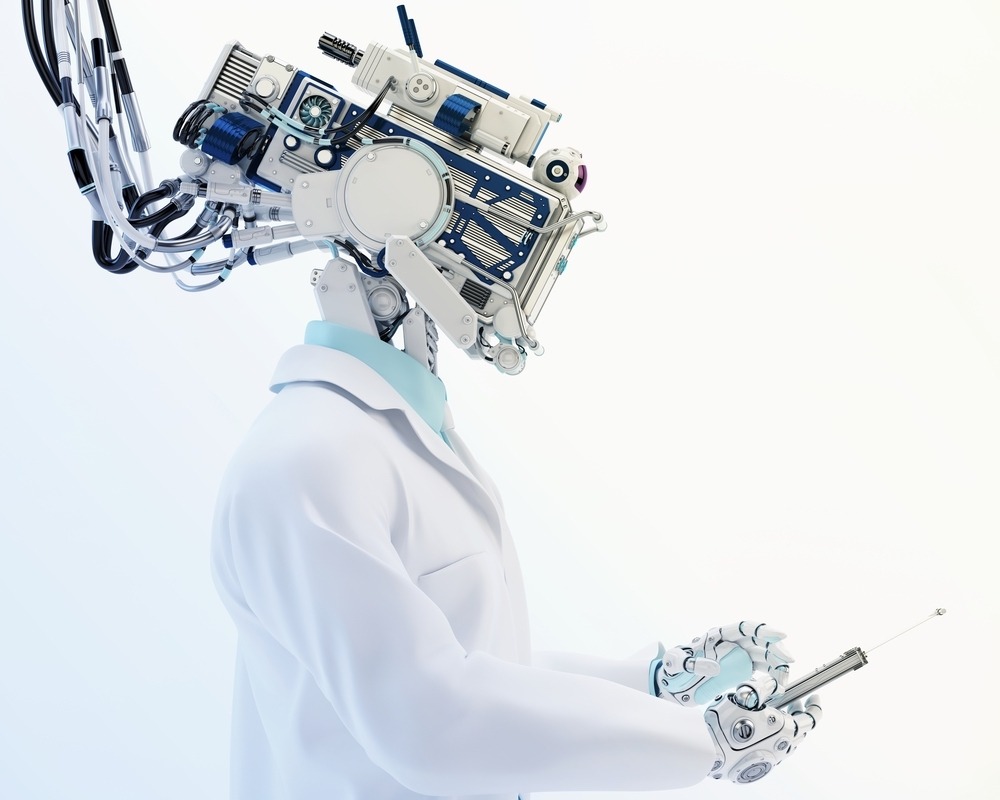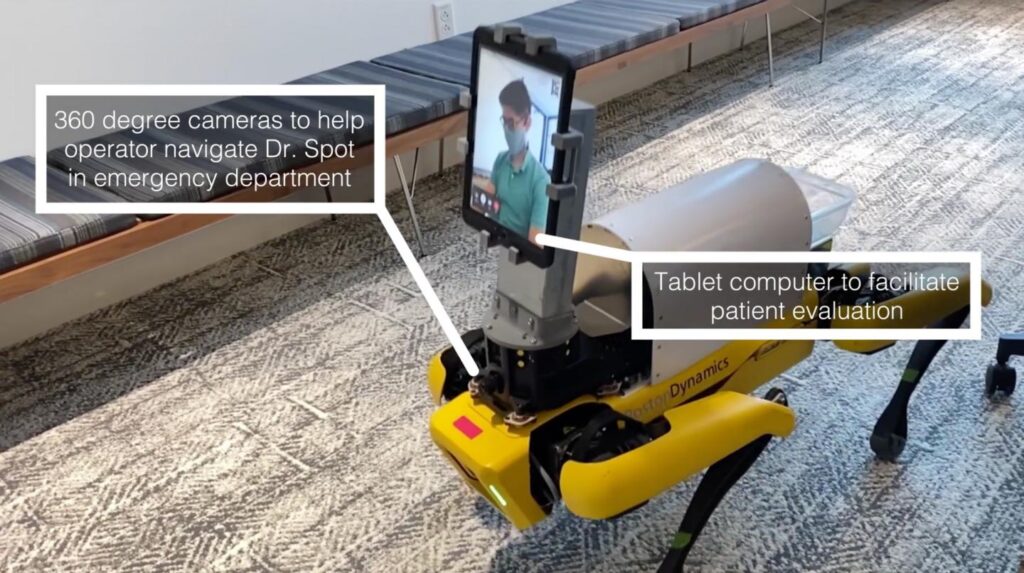
While robots may not be a common sight for patients in hospitals, in the operating theatre they’re frequently used to achieve surgical precision in minimally invasive procedures.
They’re also put to work to speed up the cleansing and decontaminating of rooms to prevent cross-contamination between patients when one leaves and another arrives.
But along the care pathway, face-to-face interactions and minor procedures have still been conducted by a human healthcare professional – but that could be about to change.
A new study has revealed how patients really feel about the use of robots to evaluate and triage them in hospitals, and the results are overwhelmingly positive.
Researchers from MIT and Brigham and Women’s Hospital carried out the study at the latter’s emergency department and found a large majority of patients responded positively to interacting with a healthcare provider on a video screen mounted on a robot.
The researchers tested their quadruped, dog-like robots developed by medical device company Boston Dynamics in the emergency department at Brigham and Women’s Hospital last spring, when Covid-19 cases were surging in Massachusetts.
Giovanni Traverso, MIT assistant professor of mechanical engineering, a gastroenterologist at Brigham and Women’s Hospital, and the senior author of the study, said: “We’re actively working on robots that can help provide care to maximise the safety of both the patient and the healthcare workforce.
“Often as engineers, we think about different solutions, but sometimes they may not be adopted because people are not fully accepting of them.
“So, in this study we were trying to tease that out and understand if the population is receptive to a solution like this one.

“The results of this study give us some confidence that people are ready and willing to engage with us on those fronts.”
Fifty-one patients were approached in the waiting room or a triage tent and asked if they would be willing to participate in the study, and 41 agreed.
They were then interviewed over video on a mounted iPad about their symptoms, while the technology embedded in the robots measured their vital signs, including skin temperature, breathing rate, pulse rate, and blood-oxygen saturation.
When the study concluded, the researchers found that more than 90% of the participants reported being satisfied with the robotic system.
In-clinic study supports nationwide survey on robots in hospitals
In a larger nationwide online survey, the researchers found that a majority of respondents were open to having robots not only assist with patient triage, but also perform minor procedures such as taking a nose swab or inserting a catheter.
Working with survey firm YouGov, 1,000 people were asked questions regarding the acceptability of robots in health care, including whether people would be comfortable with robots performing not only triage but also other tasks, such as performing nasal swabs, inserting a catheter, or turning a patient over in bed.
On average, the respondents stated that they were open to these types of interactions.
Peter Chai, an assistant professor of emergency medicine at Brigham and Women’s Hospital and a research affiliate in Traverso’s lab, was the lead author the study published today in the journal JAMA Network Open.
“Surprisingly, people were pretty accepting of the idea of having a robot do a nasal swab, which suggests that potential engineering efforts could go into thinking about building some of these systems,” he said.
Robotic systems could be of benefit during Covid-19
After the Covid-19 pandemic began early last year, Traverso and his colleagues turned their attention toward new strategies to minimise interactions between potentially sick patients and health care workers.
It was this effort that resulted in the development of the robot in their study, and new, the researchers believe it could be used to reduce healthcare workers’ risk of exposure to the SARS-CoV-2 virus that causes the disease, and help to conserve the personal protective equipment that is needed for patient interactions.
They also see a potential need to develop robots that can perform procedures that currently require a lot of human effort, such as turning a patient over in bed.
Turning Covid-19 patients onto their stomachs, also known as “proning,” has been shown to boost their blood-oxygen levels and make breathing easier – but the process currently requires several people to perform.
Administering Covid-19 tests is another task that requires a lot of time and effort from healthcare workers, who could be deployed for other tasks if robots could help perform swabs.
The MIT team is continuing to develop sensors that can obtain vital sign data from patients remotely, and they are working on integrating these systems into smaller robots that could operate in a variety of environments, such as field hospitals or ambulances.






